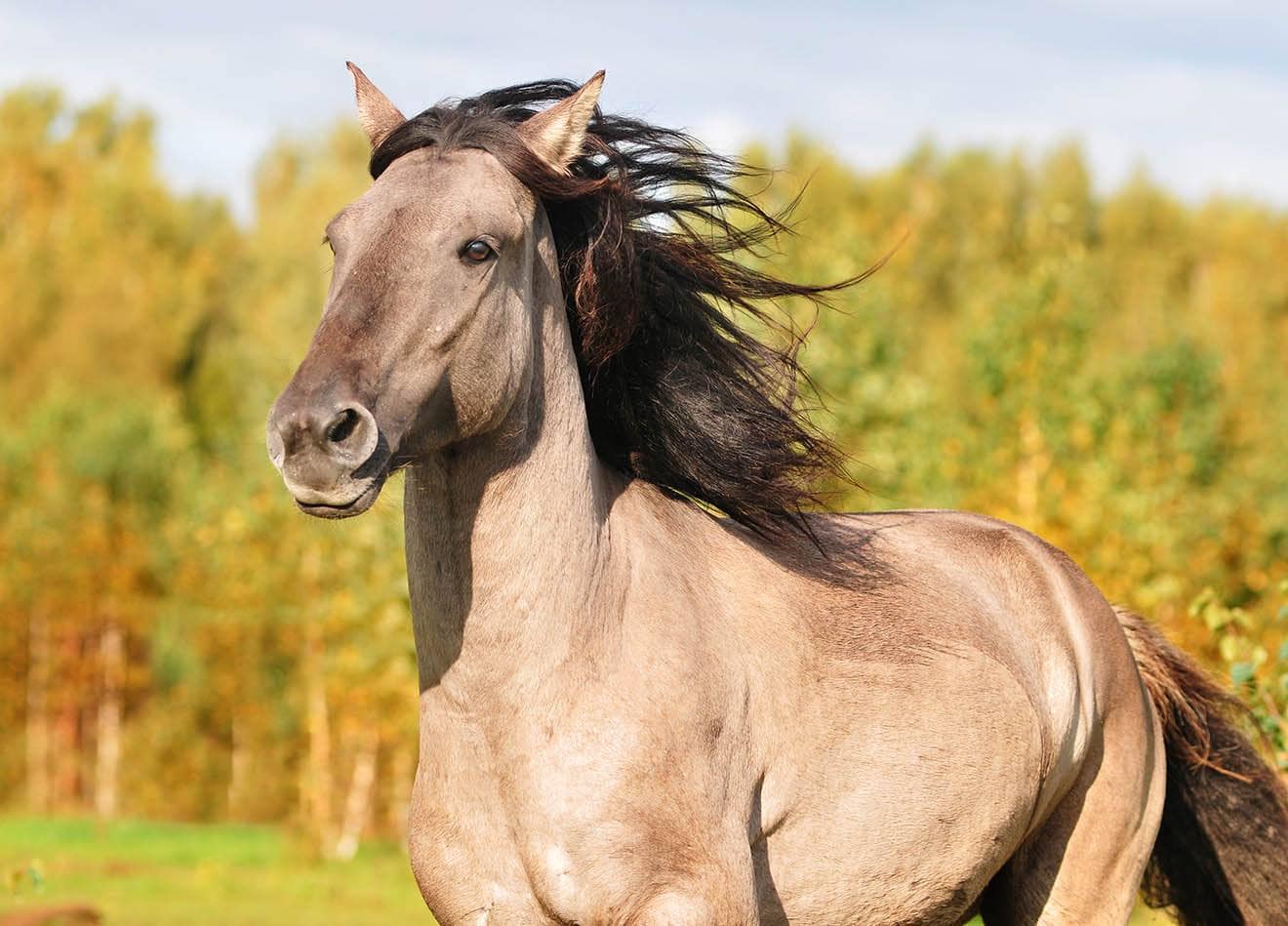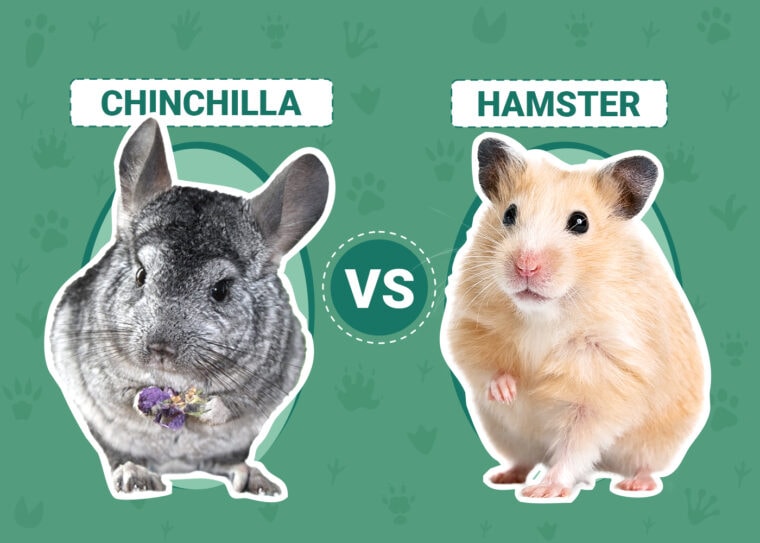
Click to Skip Ahead
Chinchillas and hamsters belong to the rodent family and look rather alike. These animals are also quite active, and you may not be able to tell them apart based on their surface-level behavior. However, a closer look will reveal significant differences.
They not only differ in size and color but also in temperament. If you aren’t sure about which one is the best option for a pet, you have come to the right place. In this article, we will let you in on everything you need to know so that you can make an informed choice between these two lovable critters.
Visual Differences

At a Glance
Chinchilla Overview
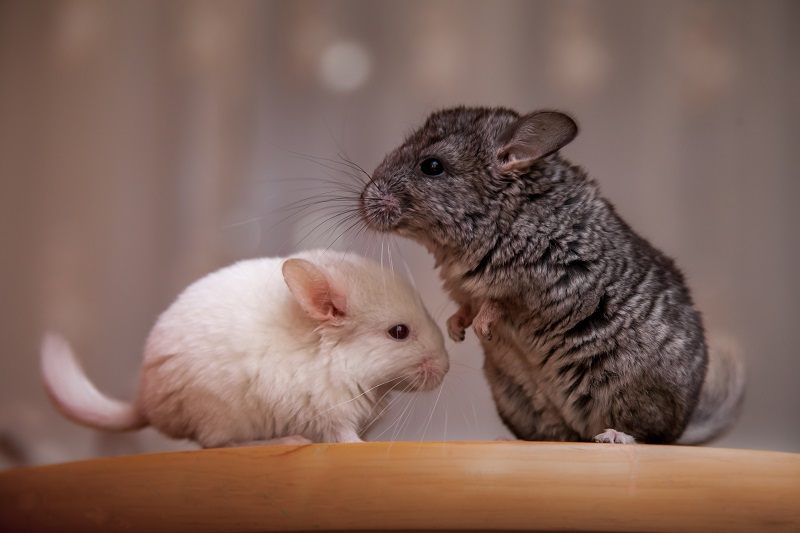
Chinchillas belong to the rodent family and are great companions. They are popular for their thick, soft fur that is said to be 30 times softer than human hair. Their most common colors include black, gray, violet, beige, and white.
These rodents can grow up to 14 inches long and weigh between 1–1.75 pounds. Plus, they can live for up to 20 years! In the wild, they usually live between 5 to 10 years.
Chinchillas have been hunted for their fur and almost became extinct at some point. Thankfully, it is illegal to hunt them today. If you adopt them as pets, it is your responsibility to care for them and protect them from predators.
Personality/Character
Chinchillas are nocturnal and are therefore more active at night. They are alert and sociable. But you will need a fair amount of gentleness and consistency in order for them to trust you.
You should have a large and roomy cage because the little fellas require a good amount of space to play.
These pets prefer a consistent routine and can be stressed out when you make changes. If you have to adjust their routine, ensure you do it gradually to avoid stressing them. Although they are not bothered by low temperatures owing to their thick fur, extremely high temperatures are unfavorable. Ideally, you should avoid anything above 77 degrees F.
Naturally, chinchillas don’t like to be held and cuddled, especially when young. They would rather run around and climb on you rather than be restrained. But if you train them from an early age while being calm and patient in your approach, they will learn to appreciate some cuddle time.
Training and Exercise
Chinchillas are very intelligent and are easy to train. Thanks to their love for treats, you can reward them and reinforce habits. You can even teach them how to obey simple visual and audio commands such as going back to their cage, coming to you, or getting into their carrier.
Chinchillas love to run around. Therefore their cage should have adequate space to allow for that. But you shouldn’t keep your rodent friend caged up all the time. Contrary to popular belief, chinchillas need plenty of playtime outside their cage to get enough exercise. However, you have to ensure the room is chinchilla-friendly with no electrical wires, water or other liquids, aggressive pets, and unsafe foods.

Health & Care
Just like other pets, chinchillas experience various health issues. Some of the most common illnesses include
Chinchillas are also prone to injuries. So, watch out for sprains, fractures, and broken bones. A healthy chinchilla should be active, sociable, and alert. They should also have healthy fur, and their eyes, nose, and ears should be clear from any discharge. Additionally, their eating habits should not change, and they should breathe without difficulties.
Diet and Nutrition
Your chinchilla needs a proper diet to stay healthy. Their digestive system is designed to handle foods rich in fiber. Therefore, feeding them a fatty diet could result in digestive upsets. Instead, consider giving them a pelleted diet and supplement it with fresh grass hay. A pelleted diet is better than loosely mixed foods because they won’t be able to cherry-pick what to eat.
Grooming
Most chinchillas will groom themselves. All you have to do is provide chinchilla dust that they can roll around in. Just like soil in the wild, the dust penetrates the fur to get rid of excess sweat and oils.
Twenty minutes is enough for a proper bath, and be sure to change the dust at least once a week. Combing your pet’s fur with a soft-bristled comb will help remove dead fur that hinders airflow and ventilation. However, you don’t have to clip the nails if the cage has a wooden floor since they will eventually wear them down.
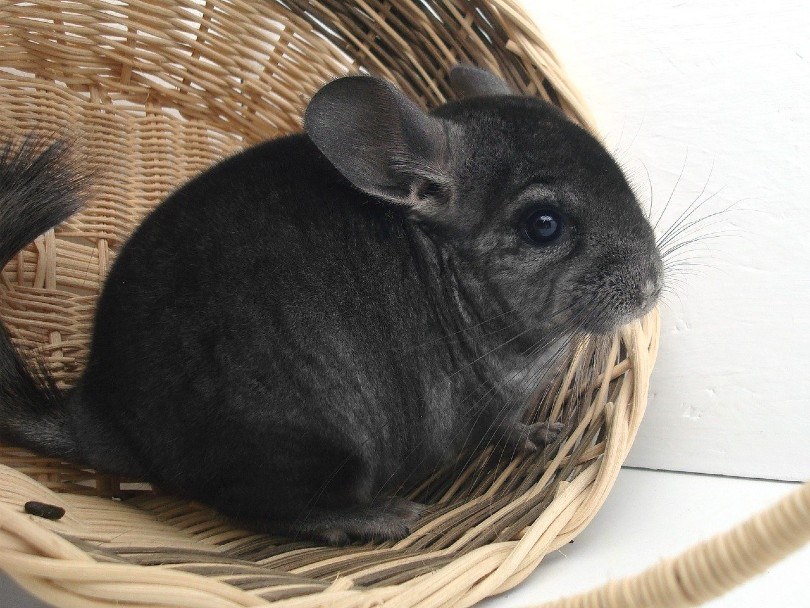
Breeding
If you want to keep several of these guys, you are encouraged to keep them in small same-sex groups for companionship. But you have to group them before weaning to avoid fighting. If you aren’t able to do that, you should consider neutering them.
When breeding, introduce the male and female couple before the female is ready to mate to encourage compatibility and prevent fighting. However, some females can respond aggressively when they’re approached before. Make sure to keep the males in a separate space away from such. Otherwise, they might get discouraged from pursuing other potential mates in the future.
Female chinchillas are aggressive when they’re close to giving birth and will even be hostile to familiar pets. They also lose their appetite and are less active than before. A chinchilla will give birth 3 times a year with an average of 2 offspring per litter. The young ones should start weaning at the age of 6-8 weeks.
Suitable for:
Chinchillas are best for people with large spaces, singles, and families.
Hamster Overview

There are five popular hamster species, including Syrian hamster, Dwarf Campbells Russian hamster, Dwarf Winter White Russian hamster, Roborovski hamster, and Chinese hamster. These come in a variety of species and colors, with each species having distinct traits.
As a rule, it is not advisable to keep members of a different species together. And unless you want hamster babies, keep the males and females separately.
Just like the chinchilla, hamsters are nocturnal and prefer nighttime activities. They are also as active and need enough space, regular playtime, and plenty of toys. Some species will live longer than others, but the average lifespan is 2 years.
Personality/Character
Unless startled or scared, hamsters are not aggressive. But they are startled easily and are known to bite as a form of self-defense. Just don’t wake them up abruptly or scare them, and you won’t have to worry about bites. Moreover, if you use treats to entice them, you can gradually gain their trust.
It is hard to read babies since their character is not fully formed. But there are several things you should watch out for when buying. Do they look angry or snappy? Do they run away every time they see you? Are they trying to attack you? If you answer yes to all those questions, then it is better to stay away. Look for the calm and curious type instead.
Training and Exercise
Hamsters need regular exercises to maintain good health. They need space to run around and satisfy their curious nature. Otherwise, they can become obese and unable to move. Without regular exercise, your hamster will get bored and become irritable and destructive. The best thing about these pets is their natural inclination to play. As long as you provide the right toys and enough space, they will exercise. Some of the best toys include wheels, hamster balls, and tubes. Since they love to chew, you can also give them something to chew on, like twigs or stamps of wood.
Training your hamster doesn’t mean you have to teach them the same tricks you normally teach a dog. But it is an opportunity to make the pet trust you. If they feel safe around you, it will be easier to handle them when cleaning their cage or taking them to the vet.
The best way to train them is by using treats. Try putting some of them in your hand and hold it close to their cage. Eventually, they will approach to examine the treats and hopefully take a bite. If you do this often, they will soon be comfortable enough to climb on your hand.
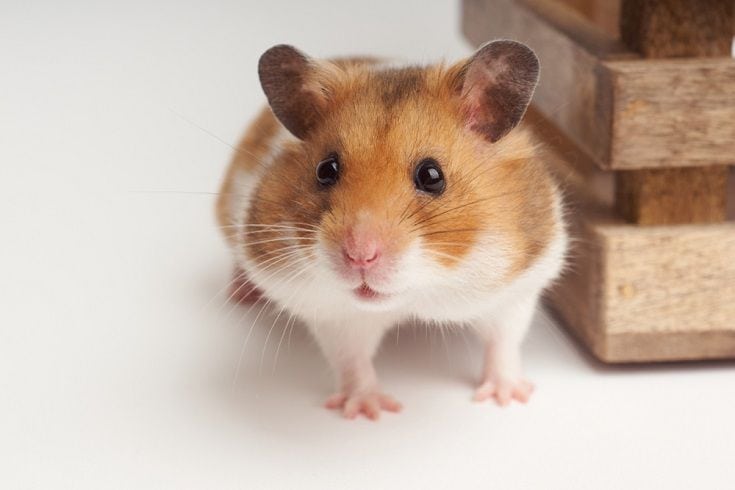
Health & Care
Hamsters are fairly healthy pets, but any disease can get serious when it occurs. Therefore, examine your pet regularly for any types of illnesses or injuries to nip most of these issues in the bud. Common signs of sickness include weight loss, loss of fur, lack of energy, hunched posture, and difficulty in breathing. Abrupt behavior change could also be an indication of illness. Common health issues include:
Diet and nutrition
Hamsters need a protein-rich diet with fruits and vegetables to remain healthy. But they will only eat what they like and leave out the rest when you feed them mixed foods. However, a pelleted diet should provide your hamster with everything they need as long as you supplement it with other safe foods. You can try kale, zucchini, collard greens, and shredded carrot. Only make sure not to overfeed them and provide adequate water to keep them hydrated throughout.
Breeding
Breeding hamsters is a task best left to professionals. That’s because females can get extremely aggressive during mating. You also need to know the hamster’s genetic heritage since some genetic defects are associated with various breeds.
The gestation period can range between 16 and 22 days, and you should expect to get 6 to 8 pups per litter. The female can become restless and active when the delivery time approaches. Providing them with nesting material will make them feel secure and will reduce the chances of abandoning or eating their offspring.
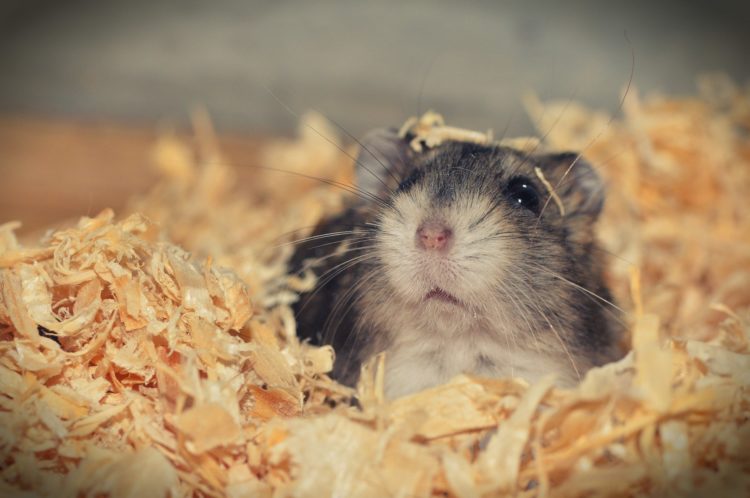
Grooming
Hamsters know how to groom themselves and don’t need your help in normal circumstances. But that doesn’t mean you should drop the ball. Your first responsibility is cleaning the cage. If it is clean at all times, the hamster will not dirty themselves, and regular grooming will not be necessary.
Since a hamster’s teeth never cease to grow, you should also ensure they always have something to chew on to keep them at an appropriate length. Also, use the right nail clipper to clip their nails should they become longer than desired.
If your pet is long-haired, you can groom them by brushing their fur with a soft-bristled brush. Some of them may get annoyed, but most will enjoy the brushing and even sit still while you do it. Just like the chinchilla, you can also incorporate a sand bath where your hamster can roll around to clean their fur.
Suitable for:
Nearly all types of hamsters are a good match for active singles and families.
Which Pet Is Right for You?
Both animals can be great companions and are alike in more ways than one. But they also have slight differences. While they are both active and sociable, a hamster can get spooked quite easily, especially if you wake them up abruptly. They will also bite when they’re startled or scared.
A chinchilla will outlive a hamster by many years. While hamsters live up to 2 years on average, chinchillas can live up to 20 years. Their diets also differ. Hamsters need a protein-rich diet with fruits and vegetables. On the other hand, a chinchilla’s diet should be high in roughage, but you can also give them fruits and vegetables moderately.
Before settling on either breed, you should consider whether they are compatible with your lifestyle. For instance, are you ready to provide regular exercises? Hamsters are smaller and lighter and will eat less. Since they have a short lifespan, they can be the perfect pets for your child. Chinchillas live longer and have softer fur. That makes them a better long-term companion and the best pet for cuddling.
Featured Image Credit: Top – webandi, Pixabay | Bottom – Johannes Menge, Shutterstock


